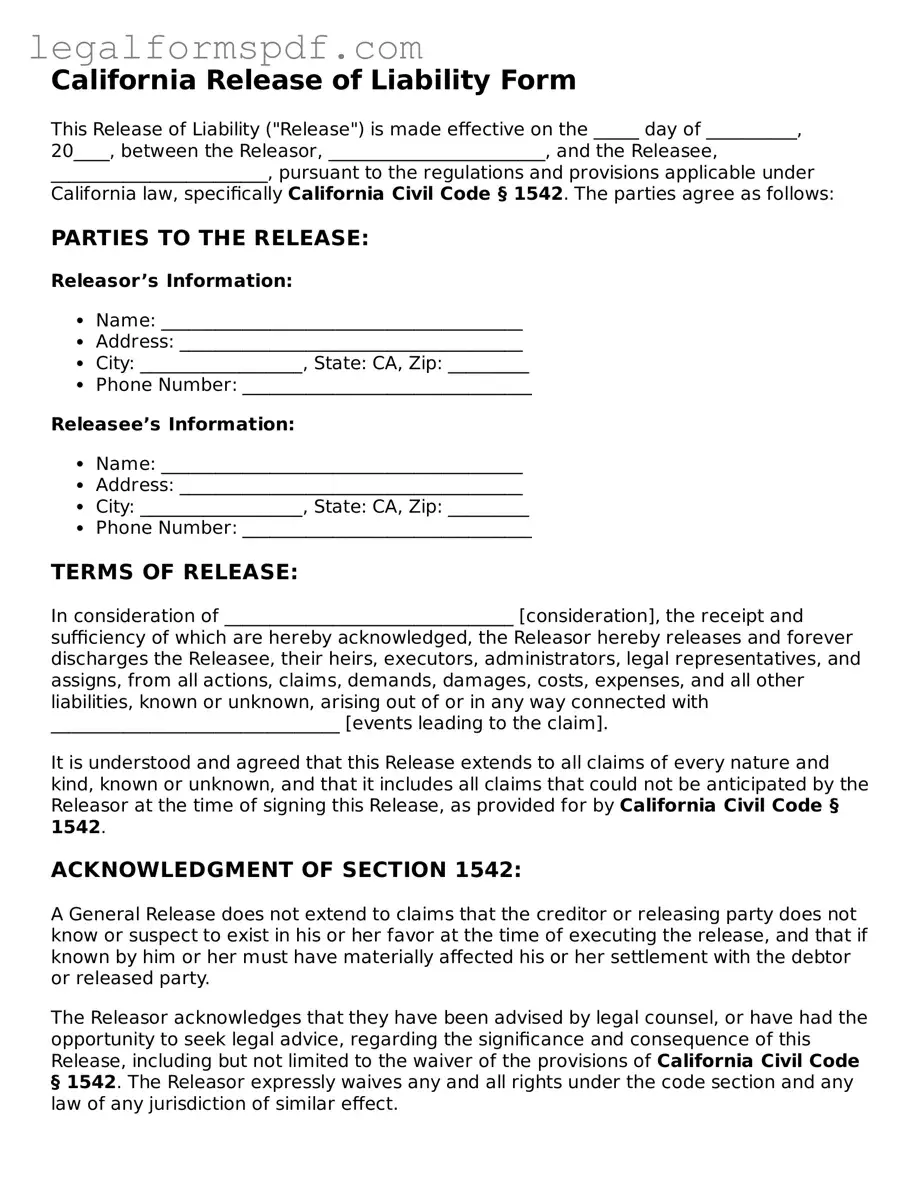What is a Release of Liability form in California?
A Release of Liability form in California, also known as a liability waiver or release form, is a legal document where one party (the releasor) agrees to waive their right to claim or sue the other party (the releasee) for potential personal injuries, damages, or losses incurred in connection with a particular activity, service, or event.
When should you use a California Release of Liability form?
This form is typically used when engaging in activities that involve a certain level of risk, such as sports events, recreational activities, or services like home repairs or automotive work. It can also be utilized during transactions, such as the private sale of a vehicle, where the seller can be relieved of liability for any future claims related to the vehicle after the sale.
Is a Release of Liability form legally binding in California?
Yes, a Release of Liability form is legally binding in California as long as it is properly executed. This means it needs to be clear, specific, and agreed upon by both parties voluntarily and without duress. It should also not involve any illegal activity. For it to be enforceable, the party signing it must fully understand the rights they are waiving.
What are the key components of a California Release of Liability form?
The key components include the names and addresses of the releasor and the releasee, a detailed description of the activity or transaction leading to the potential liability, a clear statement of waiving legal claims, and the date and signatures of both parties involved.
Can you revoke a Release of Liability form after signing it in California?
Generally, once a Release of Liability form is signed, it cannot be revoked unless it was signed under duress, misrepresentation, or fraud. If a party was misled about the nature or scope of the release, they might have grounds to challenge its validity in court.
Does a California Release of Liability form need to be notarized?
While notarization is not typically required for a Release of Liability form to be legally binding in California, it can add an extra layer of authenticity to the document and help prevent claims that the signature was forged or that the parties did not actually sign the document.
How long is a Release of Liability effective in California?
The duration for which a Release of Liability is effective in California can vary based on the specifics of the agreement. Some releases are effective indefinitely, covering all future claims, while others specify a time limit or pertain only to specific events or transactions. This should be clearly outlined in the document itself.
Can a minor sign a Release of Liability form in California?
Minors cannot legally enter into contracts, including signing a Release of Liability form, in California. Instead, a parent or legal guardian must sign on their behalf for the release to be considered valid. The legal rights of minors vary, so it’s important for the parent or guardian to fully understand the document before signing.
What happens if you do not use a Release of Liability form in California?
Not using a Release of Liability form in high-risk activities or transactions can expose an individual or business to potential lawsuits. If someone gets injured or suffers a loss, they could file a claim for damages. Having a signed Release of Liability form significantly reduces this risk by clearly establishing that the participant accepted the potential risks involved.
Where can you obtain a California Release of Liability form?
Release of Liability forms specific to California can be obtained through legal websites, attorneys specializing in California law, or organizations that offer standardized forms. It’s important to ensure the form is tailored to the specific circumstances and complies with California law to be valid and enforceable.
